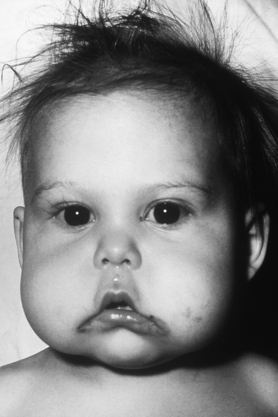CHAPTER 7 Nutrition
NUTRIENTS AND DEFICIENCIES
Nutrients are substances obtained from food and promote growth, maintenance, or repair. Six classes of nutrients include macronutrients (biomolecules) of proteins, carbohydrates, and lipids, as well as vitamins, minerals, and water. For Acceptable Macronutrient Distribution Ranges (AMDRs), adults should obtain 10% to 35% of calories from protein, 45% to 65% from carbohydrates, and 20% to 35% from lipids (fat). Acceptable ranges for children are SIMILAR, except that infants and younger children need higher proportion of fat (25% to 40%).
For vitamins and minerals, Dietary Reference Intakes (DRIs), issued by the Institute of Medicine of the National Academy, are the average daily dietary intake level sufficient to meet nutrient requirements of nearly ALL (~98%) healthy individuals (includes Recommended Dietary [Daily] Allowance [RDA]) (Table 7-1). RDIs (Reference Daily Intakes) and DVRs (Daily Recommended Values) are comparable standards and can be combined to create DVs (Daily Values), as published by the FDA.
Table 7-1 Acceptable macronutrient distribution ranges (AMDRs) and dietary reference lntakes (DRIs) for adults per day∗
| Macronutrient | Females | Males |
|---|---|---|
| Protein | 46 g | 56 g |
| Carbohydrates | 130 g | Same |
| Lipids | None | Same |
| Vitamin A (retinol) | 700 μg | 900 μg |
| Vitamin D | 5 μg (AI)† | Same |
| Vitamin E | 15 mg‡ | Same |
| Vitamin K | 90 μg (AI) | 120 μg |
| Thiamine (vitamin B1) | 1.1 mg | 1.2 mg |
| Riboflavin (vitamin B2) | 1.1 mg | 1.3 mg |
| Niacin (vitamin B3) | 14 mg | 16 mg |
| Pantothenic acid (vitamin B5) | 5 mg (AI) | Same |
| Pyridoxine (vitamin B6) | 1.3 mg | Same |
| Cobalamin (vitamin B12) | 2.4 μg | Same |
| Vitamin C (ascorbic acid) | 75 mg§ | 90 mg§ |
| Biotin | 30 μg (AI) | Same |
| Folate (folacin, folic acid) | 400 μg | Same |
| Calcium | 1000 mg (AI) | Same |
| Phosphorus | 700 mg | Same |
| Magnesium | 310 mg | 400 mg |
| Sodium | 500 mg | Same |
| Chloride | 750 mg | Same |
| Potassium | 2000 mg | Same |
| Sulfur | None | Same |
AI, Adequate intake.
∗ Includes adequate intake or Estimated Average Requirement (EAR), where NO DRI has been established, expected to satisfy needs of 50%.
† 5 μg = 200 IU (International Units).
‡ Tolerable upper intake limit (UL) is 1000 mg/day.
§ Smokers should add 35 mg to these values.
Proteins
Carbohydrates
CLINICAL STUDY
Lipids
Vitamins
Stay updated, free dental videos. Join our Telegram channel

VIDEdental - Online dental courses


 •
• 
